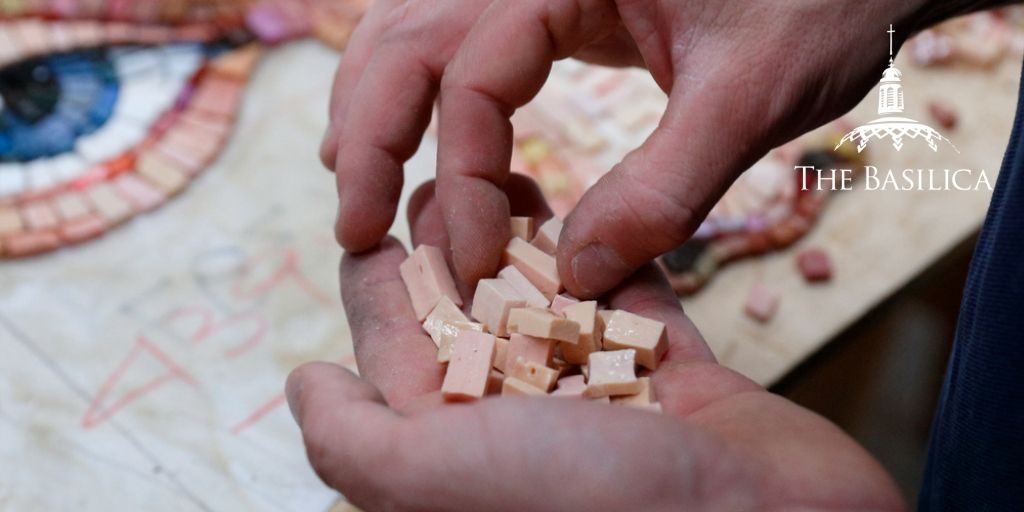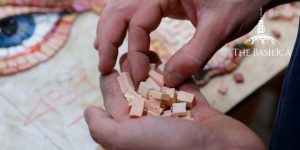
With the Feast of the Most Holy Trinity approaching, we’d like to take a moment to reflect on this Holy Day and share how the Basilica’s architecture and art honors its themes. Since the early 14th century, the church has observed this feast day in honor of the triune nature of our God. Each of the three distinct persons in the Godhead plays a unique role in the story of divine creation and redemption, in a manner mysterious yet harmonious. The Feast of the Holy Trinity presents us the opportunity to reflect with wonder on this beautiful mystery and gift. As Pope Francis has noted:
[T]he Feast of the Most Holy Trinity leads us to contemplate the mystery of God who unceasingly creates, redeems and sanctifies, always with love and through love, and enables every creature that welcomes him to reflect a ray of his beauty, goodness and truth.
The National Shrine honors the significance of the Most Holy Trinity with the Trinity Dome, which depicts the Most Holy Trinity, the Blessed Virgin Mary as the Immaculate Conception, and a procession of saints who have an association with the United States and the National Shrine.
In this resplendent dome, the intricate mosaic alone required a highly specialized, intensive process. Artisans in northern Italy pieced together the mosaic covering the surface of the Trinity Dome. The full-scale sketches of the dome were passed along to the mosaic artists, who began the process of color-coding mosaic tiles by hand, delineating more than one thousand variations of colorful Venetian glass.
The artisans at Travisanutto Giovanni company fabricated the mosaic using the reverse – or indirect – method. Invented in Italy in the late 19th century, this method allows for the creation of mosaics of a much greater scale, in a more reasonable timeframe, and at a more reasonable cost.
The Venetian glass is handmade by only two companies in the world, both of which are located in Venice. Each piece is initially shaped one at a time using a hammer and chisel. Since every tile is created for a specific place on the mosaic, if the tile breaks incorrectly while being chiseled, the artisan must take another piece of glass and begin the process again.
The indirect method is implemented as the mosaic is created in reverse, with the glass tiles temporarily affixed right side down on large sections of paper. The adhesion is achieved using a paste made from flour and water. This process ensures that once all of the sections of mosaic are delivered to the site for installation, artisans will cement the sections to the surface of the dome according to precise mapping. The paste is then scrubbed off to expose the mosaic tiles.
This is an incredible advancement from the prior method, known as the direct method, in which the glass tiles were directly cemented to a surface right side up and piece by piece, rather than section by section, taking at least three times as long to create the finished product. Learn more about the making of the Trinity Dome at the Trinity Dome website.

